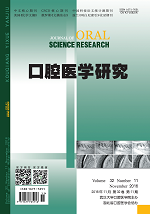|
|
Complications of Surgical Treatment of Mandibular Condylar Fractures
ZHANG Ling-ge, LONG Xing, DENG Mo-hong, CAI Heng-xing, MENG Qing-gong
2016, 32(11):
1183-1187.
DOI: 10.13701/j.cnki.kqyxyj.2016.11.018
Objective: To explore the complications of condylar fractures after surgical treatment and the preventive measures. Methods: One hundred and forty-six fractured mandibular condyles of 116 patients were treated with open surgery. The parameters for postoperative evaluation were as follows: mouth-opening, mandibular deviation during mouth opening, masticatory function, facial nerve injury and surgical scars. Preoperative, postoperative, and follow-up radiographs were analyzed in the computer. Follow-up time range varied from 3 months to 20 years. Results: Of all the 116 patients, 86 were treated by open reduction and rigid internal fixation (ORIF) and the rest 30 patients were treated by removal of the fractured mandibular condylar fragments without fixation. In the ORIF group, surgical approaches and fixed methods were closely related with the occurrence of complications. Complications occurred in the two groups included temporomandibular disorders (TMD), osteonecrosis, temporary or permanent facial nerve injury, visible scars, malocclusion, deviation of the mandible, facial asymmetry, restricted mandibular movement, and even the development of ankylosis. Conclusion: Treatment plan of condylar fracture should be based on the type of the fracture. Open reduction and rigid internal fixation were effective in the treatment of condylar fractures, however, surgical approach and osteosynthesis should be carefully chosen as the complications were correlated with these two factors.
References |
Related Articles |
Metrics
|

